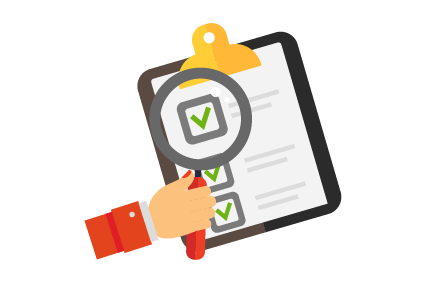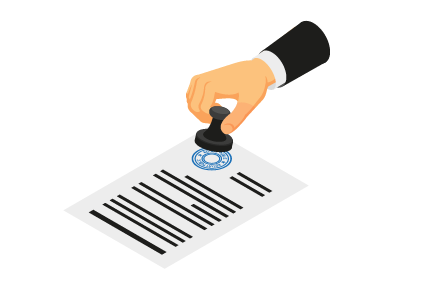RFI RFQ RFP Meaning

RFT Meaning, RFP Meaning, RFQ Meaning, and RFI Meaning. Expert advice for both buyers and sellers on how to get the most from these procurement and purchasing processes.
What is the meaning of RFQ, RFI, RFP, and RFT? Contract negotiation training graduates often ask us to explain four key terms that comprise the ‘RFx‘ processes (i.e. RFI, RFQ, RFT, and RFP). These processes have grown in popularity in procurement and purchasing. This is especially so in large organizations with professional buyers, purchasing managers, procurement managers, and sourcing managers.
The best negotiation training classes teach how to select and use each RFx process. This post briefly summarizes the key differences.
RFQ – Request for Quotation
A chance for potential suppliers to competitively cost the final chosen solution(s).
RFP – Request for Proposal
Sometimes based on a prior RFI, a business needs-based request for specific solutions to the sourcing problem.
RFI – Request for Information
An open inquiry that spans the market seeking broad data and knowledge.
RFT – Request for Tender
A chance for potential suppliers to submit an offer to supply goods or services against a detailed tender.

The Challenge
In practice, you may find people wrongly use these phrases to mean the same thing. This is because many organizations don’t know the differences well enough. Lack of proper training can result in buyers missing negotiation advantages.
On our contract purchasing training for buyers, clients tell us how their departments use these purchasing processes to “write the rules” of the buying game to side-step negotiation. There is a great deal that suppliers can do to improve their position. As a starting point, we help students on our procurement sales negotiation training courses to get to grips with the differences between these processes.
Request for Quotation (RFQ)
RFQs are best suited to products and services that are as standardized and as commoditized as possible. Why? Procurement wants to make suppliers’ quotes comparable before contract negotiations begin.
An RFQ is a solicitation sent to potential suppliers. It contains, in exacting detail, a list of all relevant parameters of the intended purchase. These include:
- Personnel skills, training level, or competencies.
- Part descriptions/specifications or numbers.
- Quantities/volumes.
- Descriptions or drawings.
- Quality levels.
- Delivery needs.
- Term of contract.
- Terms and conditions.
- Other value-added needs or terms.
- Draft contract.
Price per item or per unit of service is the bottom line with RFQs. Other aspects of the contract negotiation deal impact the analysis process as determined by the buyer. Supplier decisions are usually made by the well-trained procurement department. This comes after comparing and analyzing the RFQ responses for negotiation benchmarking advantage.
RFQs are typically for supporting documentation for sealed bids (either single-round or multi-round). RFQs may be a logical precursor to an electronic reverse auction.
Request for Proposal (RFP)
An RFP is procurement’s solicitation sent to potential suppliers with whom a creative relationship or partnership is a consideration. Typically, the RFP leaves all or part of the precise structure and format of the response to the discretion of the suppliers. In fact, the creativity and innovation suppliers choose to build into their proposals may set apart one trained vendor from another. Later contract negotiations tend to take more time and be more wide-reaching in their impact on the buyer’s business.
Effective RFPs typically reflect the negotiation strategy. They also reflect short and long-term business goals and provide detailed insights with which suppliers are able to win the contract. If there are specific problems in the RFP response, these are described along with whatever root cause assessment is available.
With the best onsite negotiation training, your RFP and RFT should seek:
- Specific data
- Offerings
- Quotations
Your RFP and RTF should also seek questions about the following to assist your later business negotiation:
- The specific items on which the suppliers are proposing
- Business needs
- Performance measures
- Information
- Ideas
- Instructions on how to reply
- Due date
- Technical and other training
- How will we evaluate how feedback will work
- Describe the process for selection
- Request for cost breakdown (sometimes)
- Communication: cover letter (sets the stage), calls in advance
- Who to contact with questions
- Addressee—chosen carefully
Request for Information (RFI)
As the name suggests, procurement uses RFIs to gather information. In turn, this helps decide on the next step before contract negotiations begin. This means that RFIs are usually not the final stage. Instead, procurement often uses RFIs along with the three requests above.
An RFI is a solicitation that procurement sends to a broad base of potential suppliers. Its purpose is for conditioning, gaining information, preparing for an RFP or RFQ, forming a strategy, or building a database. These facets are useful in later supplier negotiations about:
- Supplier facilities, finances, attitudes, and motivations.
- The state of the supply market.
- Supply market dynamics.
- Trends and factors driving change.
- Alternative pricing strategies.
- Supplier competition.
- Breadth and width of product/service offerings, by the supplier.
- Supplier strategic focus, business, and product plans.
Procurement may use RFIs to include a detailed list of products/services for pricing requests. The pricing should be used for comparative purposes for later negotiation. Negotiators should not use pricing as the basis of their buying decisions. Through analysis of RFI responses, you may find strategic options and lower-cost alternatives. You may also find opportunities to reduce costs.
Request for Tender (RFT)
An RFT is procurement’s open invitation for suppliers to respond to a defined need—as opposed to a vague request. The RFT usually requests similar information to an RFI, plus specific metrics. RFTs will usually cover product and service offerings as well as information about the suitability of the business.
As negotiation courses often advise, it is not unusual for a buyer to put out unclear or vague business needs in their RFT. This lack of clarity can make it harder for the supplier to propose a solution and is not the best use of an RFT. Instead, RFTs should only be used when the buyer is clear on their needs. Ideally, the buyer should also be clear on the range of procurement solutions that might fit the buyer’s needs. This gives the trained buyer a contract negotiation advantage.
Without proper procurement training, however, too many buyers issue RFQs that are really RFTs.
Advice
Buyers: Putting these processes in place the right way requires:
- Effective negotiation skills training.
- A supporting organizational infrastructure.
- Procurement or contract negotiation training.
Otherwise, these processes are at risk of being used as a token exercise to keep your department happy but being avoided in practice. While The Negotiation Experts do offer clients advice in the area of implementing procurement processes, our focus is on sales, procurement, and contract negotiation training, with other customized negotiation courses.
Sellers: We counsel our Sales Training NYC graduates on how and especially “if” they should participate in these processes as being the first question they need to address. If you have a company policy, be sure to first check your and the buyer’s competitive negotiation style, position, and power. Not doing this can end up wasting your time, costing you the business, or worse: you could win unprofitable business.
Also see: Negotiation Definition.
YOU MAY ALSO LIKE











Good Article
expert advice for both buyers and sellers on how to get the most from these procurement and purchasing processes very good post thanks
An RFI is primarily used to gather information to help make a decision on what steps to take next. RFIs are therefore seldom the final stage and are instead often used in combination with the following: request for proposal (RFP), request for tender (RFT), and request for quotation (RFQ). In addition to gathering basic information, an RFI is often used as a solicitation sent to a broad base of potential suppliers for the purpose of conditioning suppliers’ minds, developing strategy, building a database, and preparing for an RFP, RFT, or RFQ.
Well explained. Tnx!
thanks.. learn about business short code
very good and detailed information
I am about to start a intensive training in few minutes on Mastering the procurement process and commercial contracts, and this was a very helpfull information.
Thank you,Hugs
Thank you very much, I have appreciated the information that has been supplied. This is really an eye opener.
Thanks for sharing your insights.
Thank you for the useful information and clear clarifications on procurement trems.
after a long such of all kind of Procurement processes, this has been the
most amazing site of all…its knowledgeable
Also, there are ITB (invitation to bid) and CFT (call for tender)?
Good for share knowleage
I need more explanation of quotation process.?
Very good
Easy to use and understand
Very useful information, easy to use and understand
RFP is also know as Request for Purchase which seemingly is equal to RFQ explained here? or is there another view ?
PRF=Purchase Request Form (or in some organizations, Internal Requisition Form) which an initial step of asking management’s approval for purchases. On the other hand, RFQ is the second step when the PRF is approved by management and then procurement department issues RFQ to collect competitive quotations finalize the purchase. When RFQ is analysed and approved, PO or Purchase Order is issued to the successful vendor/supplier.
However, RFP or Request for Proposal is issued when procurement department seeks creative/innovative information to implement project (s).
A big thank you to team of this website as it helped me gather and understand basic terms of business and sales related stages.
While browsing searching different words looking for Information Procurement Processes (RFT RFQ RFP RFI) landed to this site… done my search end. Thanks.
and straight to the point
Impressive information
Thank you for valuable information which I feel will help employees in the procurement field.
While the RFQ abbreviation above is commonly used in business articles and vendor acquisition forms and described as A "Request For Quotation" here, it would not apply to the construction, engineering or architecture industry. The definition in the building industry where it is defined as a "Request for Qualifications". Such a solicitation is sent to gather potential bidders and qualify them on their qualifications (experience, bond-ability, insurance(s), financials and current licenses as applicable). A RFP (Request for proposal) would include any pricing or bid for the proposed work. The definition "Quote" is actually misleading as this would imply a cost is to be connected to the response for which all necessary quoting materials would not necessarily be included. Such terms are widely used in Building Construction and defined in professional practice handbooks such as the AIA (American Institute of Architects) handbook of professional Practice.
While either can be considered correct depending on the application or industry, it is important to understand that a "Quote" is often associated with a price which can be misinterpreted when a project is bid competitively.
Very good… I am satisfied… Without this may be not good business
Excellent info. Glad I found your website.
A very good and crispy description
EXCELLENT, DETAILED EXPLANATION PROVIDED. VERY USEFUL
It helps one to sharpen his/ procurement skills
Excellent Explanation…thanks
Very helpful
Very good specially for persons new to job
This is an excellent explanation of terms that are frequently confused.
very good info
its really very helpful. keep it up
Great post. For those of us looking to submit RFPs, RFQs, etc. Where are the best places to look? (i.e. on the web or in the U.S.)
Useful explaination, woud also help if a general template is provided
Very good Explanation
"Extremely helpfull for the freshers in the field".
yea its really helpfull…. Thanks
Pubish New commercial issue on the same site, really it would be better for the all users.
Thanks..very helpful!!
This content is very helpful!! Thanks!!
The content of this article was helpful, although the misspellings caused me to question it.
clearly helpful and useful
Very Helpful and Easy to Understand
VERY HELPFUL
Very well explained ..Thanks Much
Excellent
Good explanation!
Excellent comparison for a new person!
Found this extremely useful
It’s about time someone who knows their Procurement stuff clarified the differences between these most popular procurement processes. As someone who’s worked in the profession for 12 years, and a savvy web user, I’ve been surprised to come up empty handed when searching for articles explaining when to use each procurement process. Now I simply send this url to new recruits and internal clients who want to know more. I expect this to save me a ton of time over the course of a year, and make the questions that come back that much more interesting to answer.
Very clear, liked the layman language used to explain the differences.